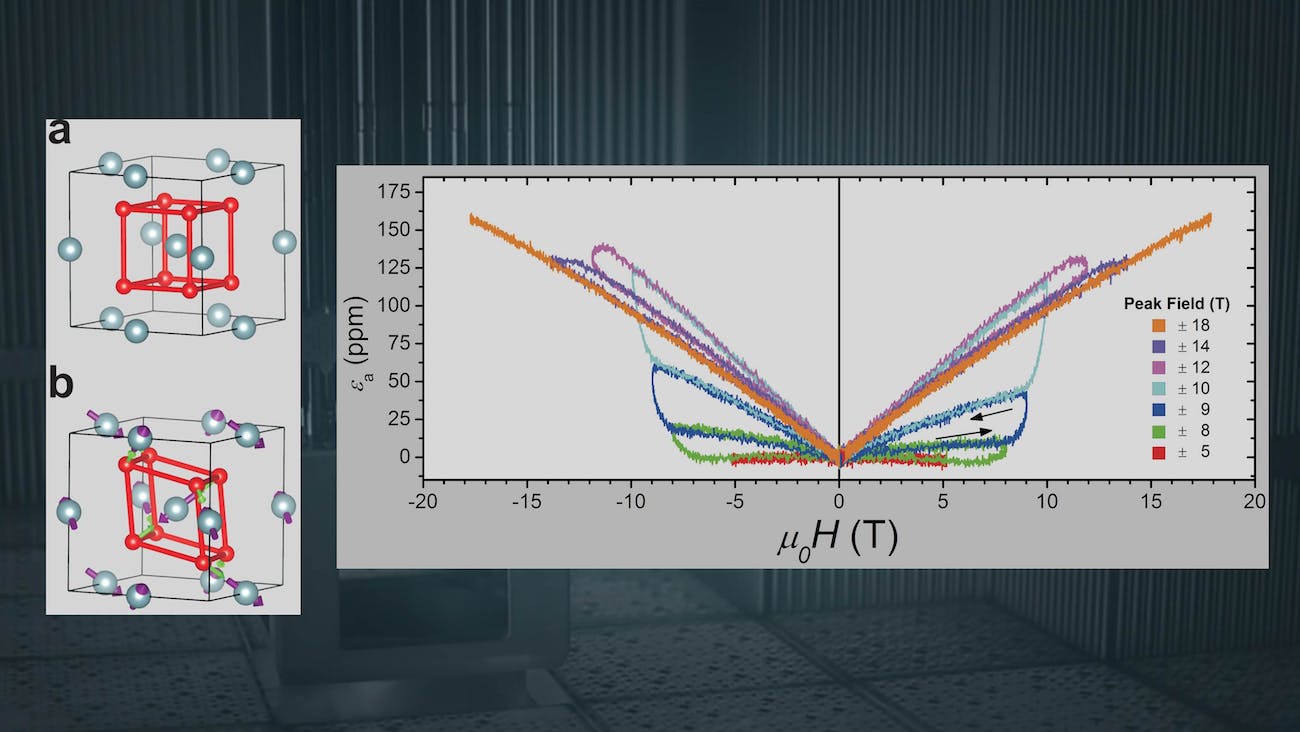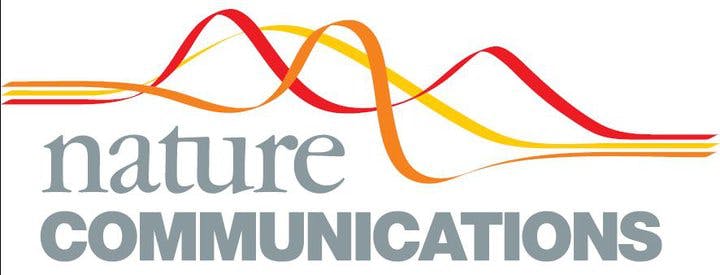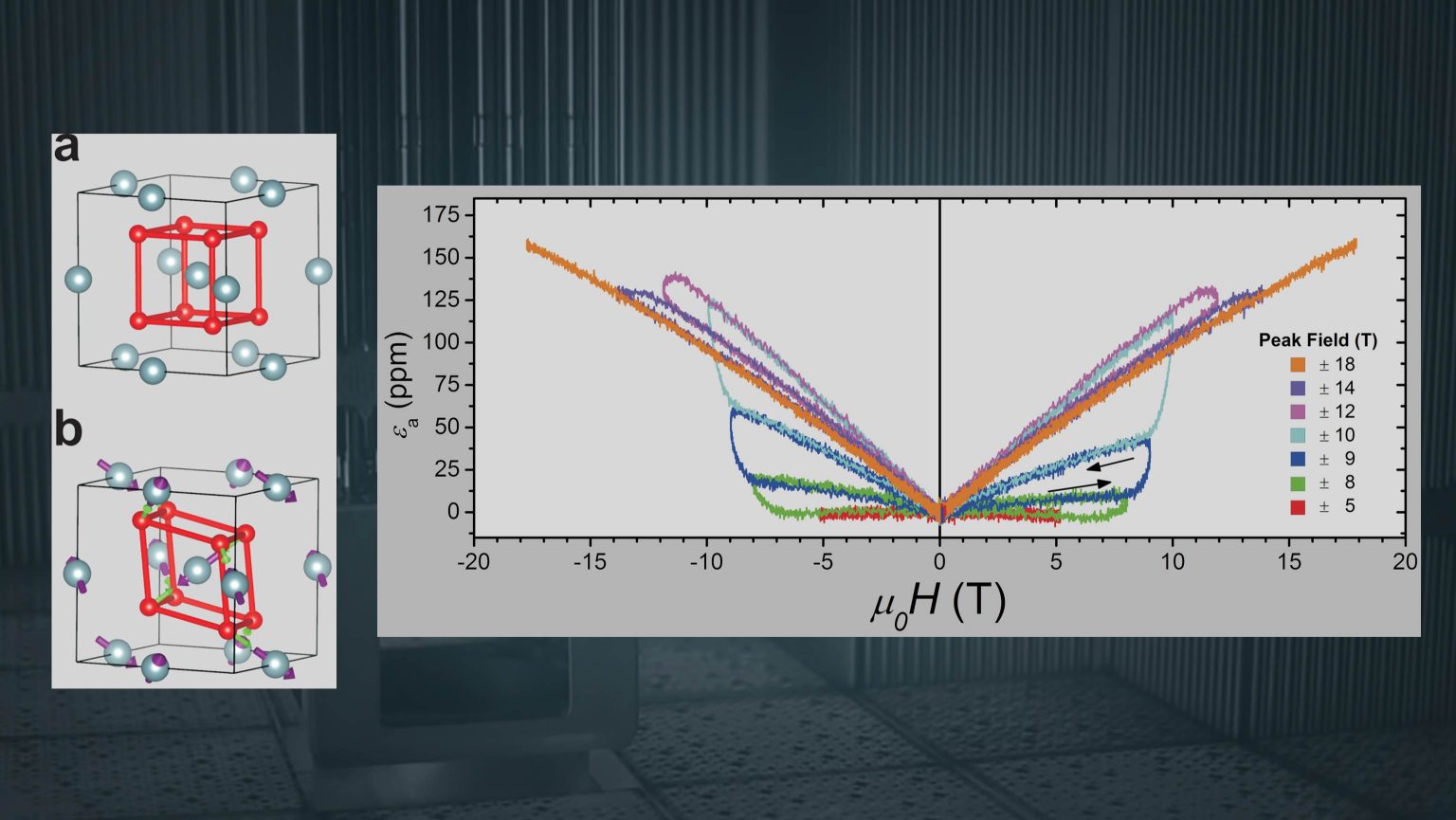Uranium dioxide (UO2) has been a key component of fuel for nuclear power plants for decades, but advances in scientific capability are enabling new discoveries in our understanding of thermal and magnetic properties of this unique material.
UO2 is one of the few, and the hardest, piezomagnetic materials known; however, new INL-led research is making it possible to better understand its thermal and elastic properties. This understanding can lead to improved predictive modeling for existing and advanced nuclear fuels and safer, more efficient fuel designs. Now, a paper on this research has been featured in the prestigious journal Nature.
Piezomagnetism describes a rare property observed in some magnetic crystals where a magnetic field or moment can be induced by applying physical stress, and conversely, a physical deformation of the crystals can be induced by applying a magnetic field. The property is analogous to piezoelectricity, commonly employed in microphones, speakers and sensors.
These new results were discovered in a collaborative research project involving researchers at Idaho National Laboratory, Los Alamos National Laboratory and Aix-Marseille University in France. The project is led by Krzysztof Gofryk, a staff scientist in the Fuel Design & Development department of INL’s Nuclear Science & Technology directorate.

“There are still some new surprises as we work to unravel all of the reasons behind the exotic thermal properties of uranium dioxide,” Gofryk said. “We discovered tiny distortions in the crystals’ cubic shape that lead to piezomagnetism, and they switch along with the polarity of high magnetic fields – up to 92.5 Tesla.” Tesla (T) is a unit of measure for the strength of magnetic fields. One Tesla is more than 20,000 times stronger than earth’s magnetic field. Compared to other known piezomagnetic materials, UO2 is by far the hardest, requiring record high coercive fields of 18 T to demonstrate the characteristic reversal as the field strength reaches that field strength.
Gofryk worked with partners at the National High Magnetic Field Laboratory’s Pulsed Field Facility at Los Alamos National Laboratory. Supported by DOE, the National Science Foundation, and the state of Florida, the PFF is the only facility in the world capable of generating magnetic fields at such high strengths.
“This research is important because we need to fully understand the magnetoelastic properties of UO2 in order to fill in the gaps in our knowledge about this important fuel material,” said Marcelo Jaime, a Los Alamos National Laboratory researcher who is a co-author of the Nature paper. “The interplay we’re seeing between the lattice structure and its unique magnetic properties might have important implications for its thermal properties, especially thermal conductivity.”
Better understanding of the unusual thermal conductivity in UO2 is of great interest for those developing advanced new fuels and models of the material properties. Further research in these areas could lead to safer and more economic reactor design, which is an important part of INL and DOE missions.

The paper, “Piezomagnetism and Magnetoelastic Memory in Uranium Dioxide,” was published today in prestigious Nature Communications, and can be found here:
https://www.nature.com/articles/s41467-017-00096-4
Gofryk’s research was supported by the U.S. Department of Energy, Office of Basic Energy Sciences, Materials Sciences, and Engineering Division. In addition to Gofryk and Jaime, other co-authors of the Nature Communications paper include: A. Saul, M. Salamon, V.S. Zapf, N. Harrison, T. Durakiewicz, J.C. Lashley, D.A. Andersson, C.R. Stanek, and J.L. Smith.





